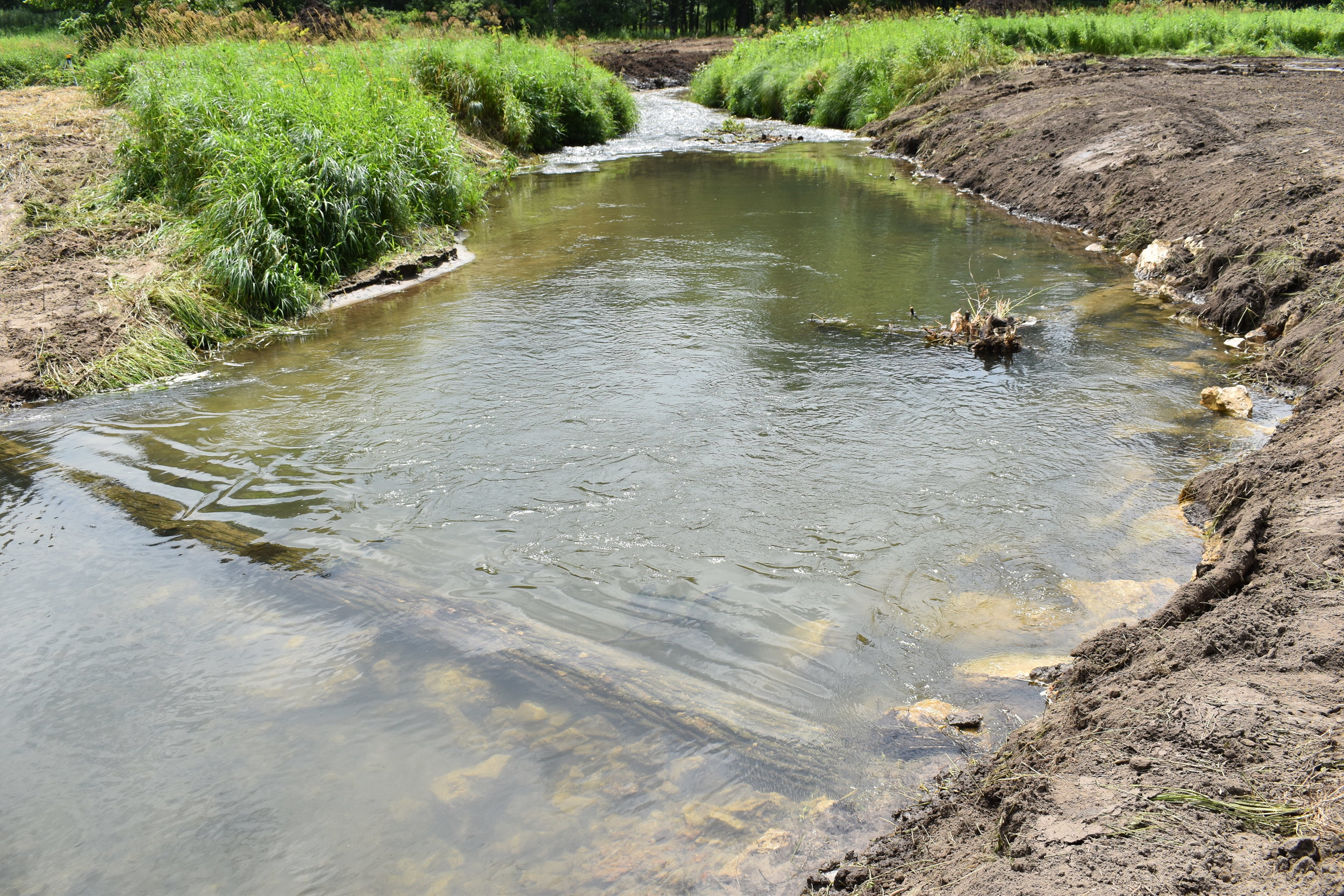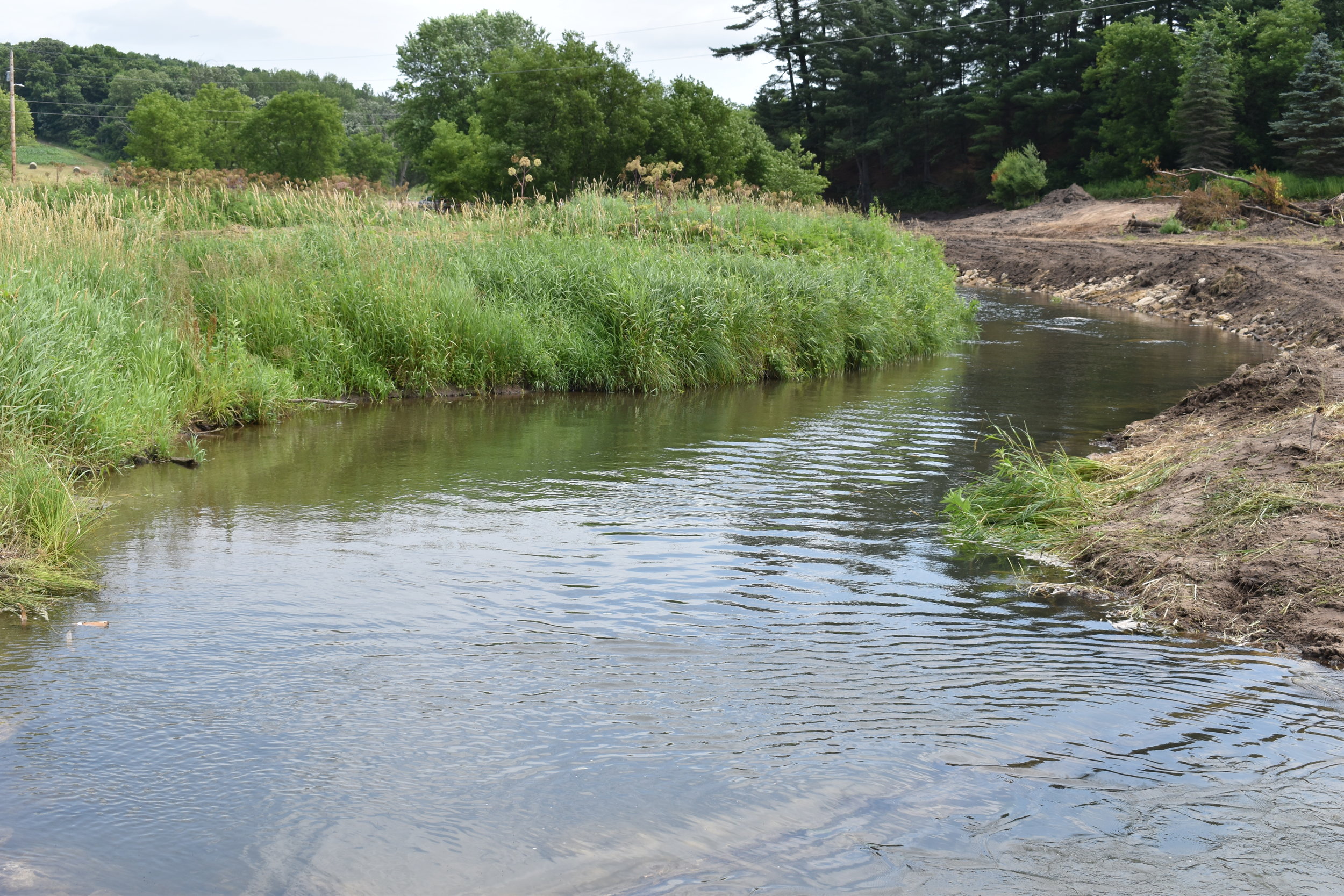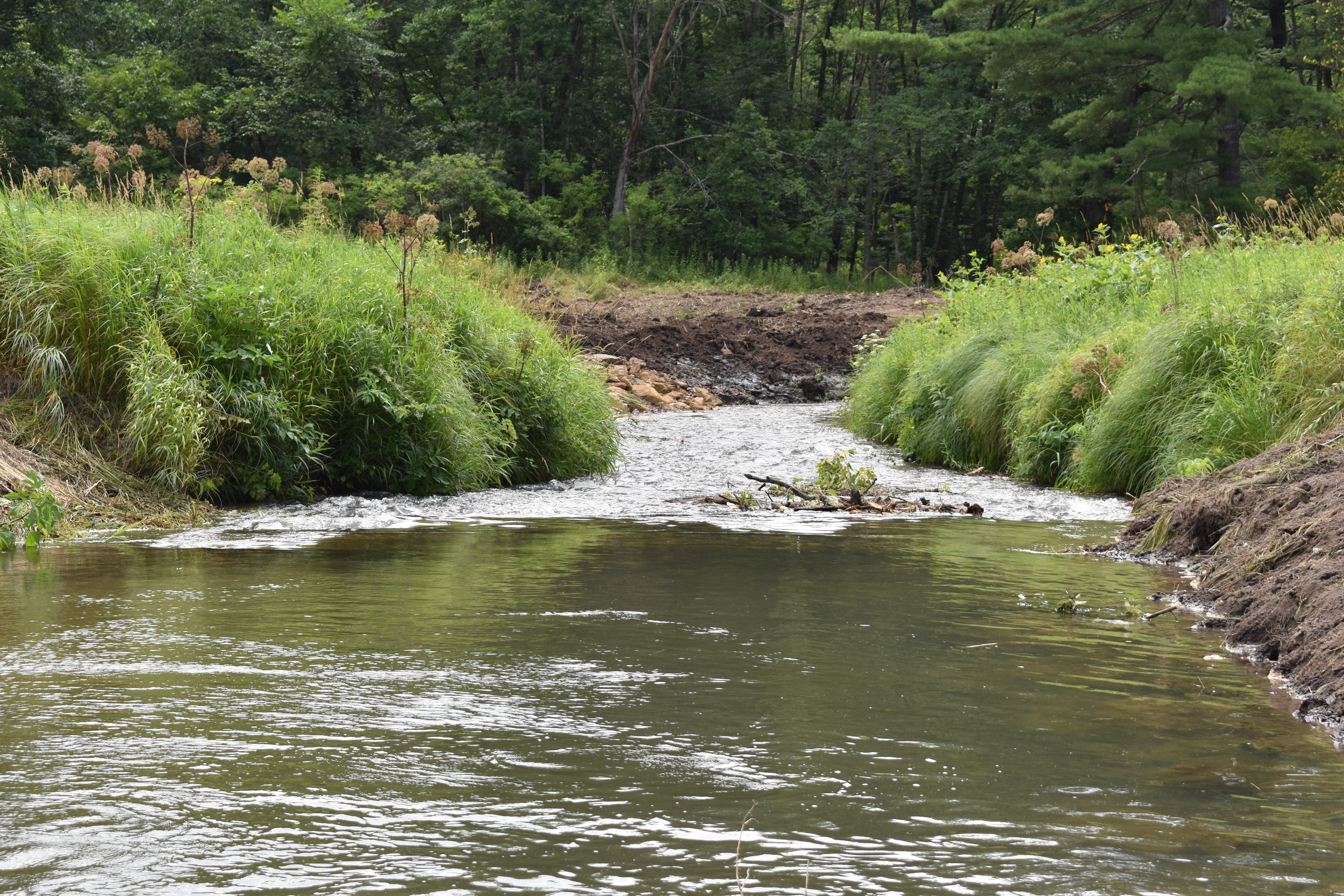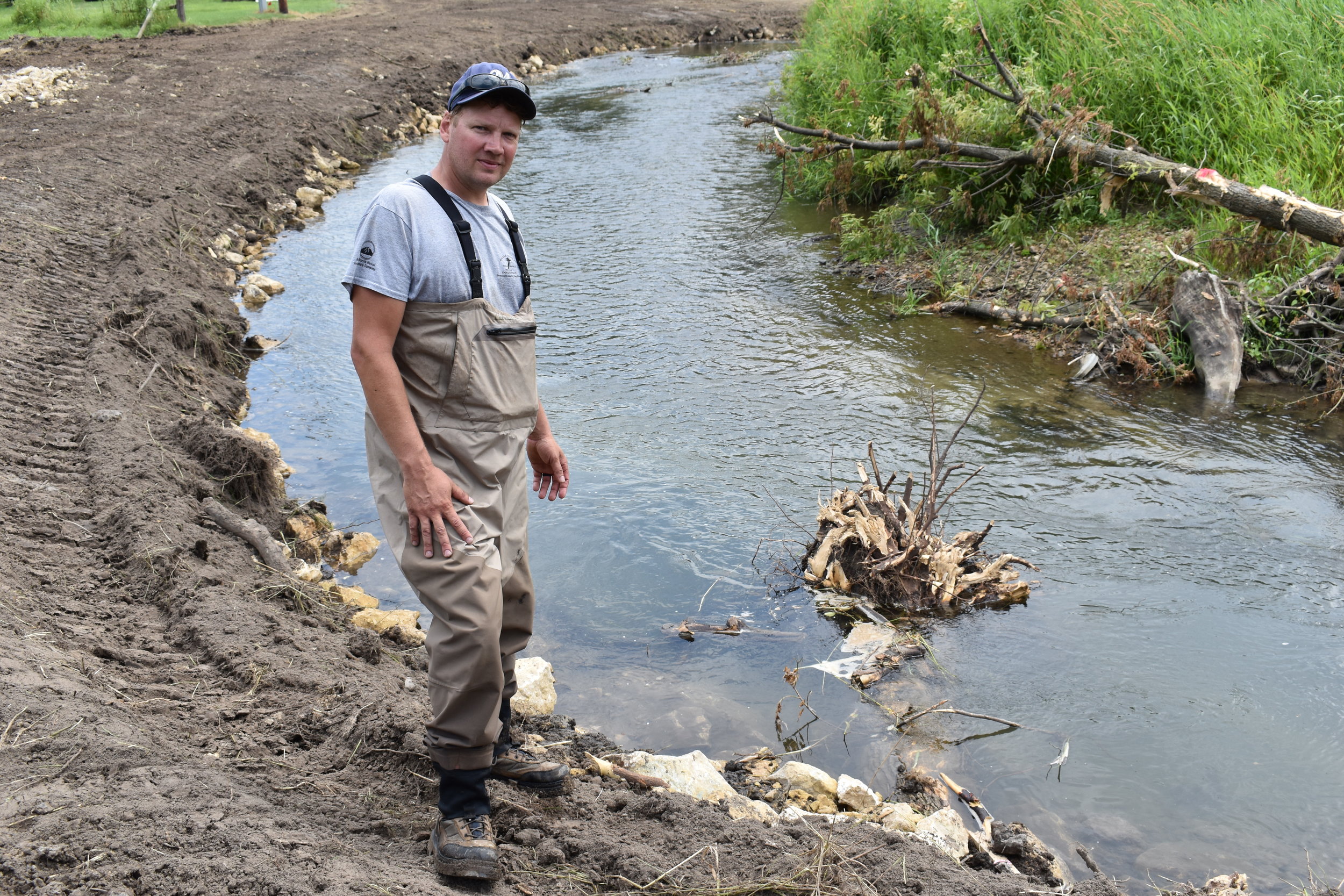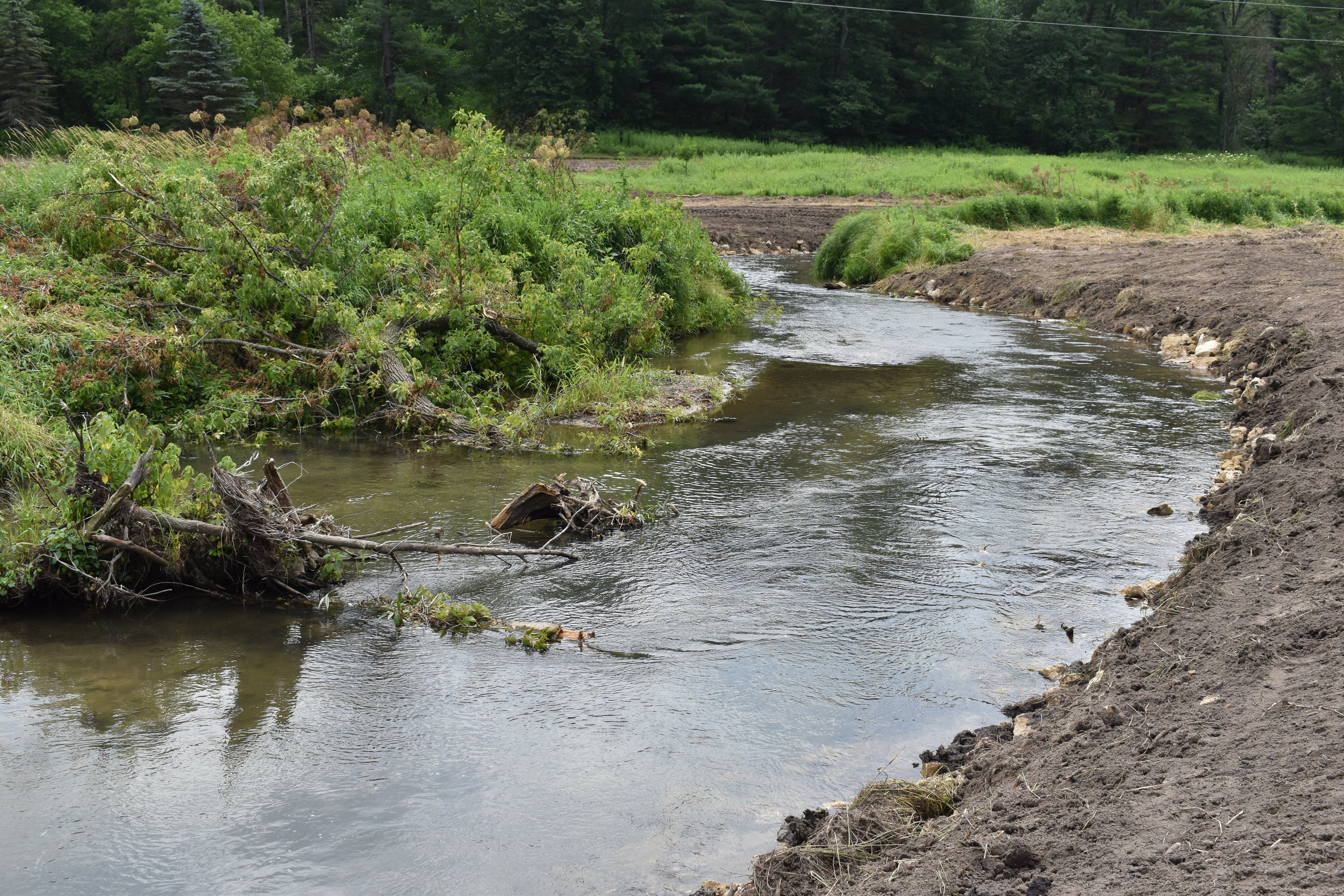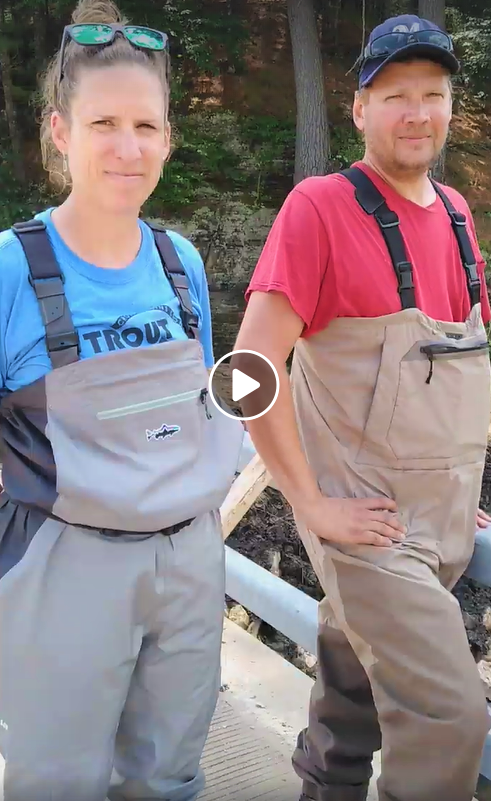Vernon County’s Billings Creek focus of restoration efforts
On July 8th, I did an impromptu live featuring bank restoration on Billings Creek, Southeast of Wildcat Mountain State Park.
I caught up with Matt Albright, a technician for Vernon County Land and Water Department and Caroline Druschke of UW Madison last week, to look at the nearly completed project.
With the Driftless seeing other creek and stream bank restorations, the question could be raised, are these restoration efforts good or bad?
The goal of the restoration was to get varying types of habitat for different age classes of German browns and native brook trout. Deep pools, runs, different types of woody vegetation, woody habitat for fish, and bugs are what helps meet that goal.
This is a unique project partly because there will be native warm season grasses that will be seeded in, when normally cool season grasses are seeded. The native warm season grasses have a deeper variant root system which will hold the banks better in floods. When restorations are done, the grass is seeded to hold soil a foot or so off of the water up to the ordinary high-water mark, otherwise it will wash away.
“Some of these (creeks/streams) doubled in width, while other spots handled the floods better. We are trying to go 3-to-1 on the side slopes on the banks so it rides better and takes the pressure off,” Albright said.
While many Driftless streams are cold water fed, they tend to keep their temperature better. In other areas, the trees will keep the streams cooler. “These are such ground-water fed streams so they tend to stay cooler,” Albright said.
On flooding he noted, “We have steep topography here so a lot of these streams are kind of flashy and can come up quick. That is why we wanted to reconnect this with the flood plain at the 3-to-1 to take that pressure off of the stream banks.”
During the Billings Creek restoration project, Caroline Gottschalk Druschke, Ph.D., who directs an interdisciplinary group of researchers at the University of Wisconsin-Madison working at the intersection of public engagement and natural resources management, stated that she technically has no role in the construction.
“What I’m interested in researching is looking at the impacts of stream restoration projects on streams themselves, and large communities as well. For this project it is how this stream restoration project changes the stream itself, and how it changes the stream channel. This looks dramatically different than it did a week ago, like it is almost an unrecognizable stream,” Druschke said.
She stated, what she was doing before the project started, was a series of stream channel cross-sections, where she measures the stream channel itself, and then recreates it on a computer.
She then will go back after the construction is completed and resurvey all those, comparing the changes in the stream channel itself. She stressed that she wants to know how the stream and the flood plain changed from the project.
In addition, Druschke, before and after construction, was sampling for phosphorus in the water, and methane and carbon dioxide that is coming off of the stream itself, to see whether or not there are some surprising changes in how the stream itself functions as a result of the restoration project. She will continue her sampling on a weekly basis for a period of time even after the completion of this project.
She acknowledged the focus of these restoration projects like this one on Billings Creek, are largely to create better trout habitat, access for anglers, and also help with some of the erosion issues from constant flooding in the Kickapoo Valley.
“I’m really interested in hearing different people’s perspectives about what streams should do, what they should be used for, how they should be managed. Part of my long-term work is sitting down and interviewing land owners and restoration managers and community groups about their perspectives on streams, and what they look like and what they should be used for.”
Druschke is aware that there are a number of people who take the approach that you should leave streams as they are, and feel the answer to that is probably that there are some more immediate, short-term needs and concerns with streams that need to be addressed.
“On a property like this one where there is a lot of erosion, the property owner had a lot of this kind of pasture blown out, and it was not necessarily an option for them to say, ‘I’ll wait and let nature take its course’. I wouldn’t argue with anyone about their choices, but I think it is realistic in some situations where people want to take care of their properties and want to take care of erosion concerns and their angling access,” she said.
For those reasons, she thinks counties and partners do stream restoration projects, and try to facilitate projects like this one in the best way possible. Druschke shared that she understands and stressed that she can appreciate both approaches.
She added, “Streams across the United States, across the Kickapoo Valley, are largely impacted by humans and sometimes the context is totally removed at this point from letting nature run its course. In many ways, we haven’t allowed streams to do that in this place. The human footprint is so significant in the Kickapoo Valley, specifically, and throughout the Driftless.”
Druschke also thinks the impact of European settlement in this region cannot be underestimated in a variety of ways. Specifically, in terms of stream systems impact, in the Kickapoo Valley, the valley floors are now 10 feet above where they were 120-150 years ago as the result of agricultural practices imported from Europe.
She feels the drive to settle and grow had a huge impact that she feels people really look at. “Even taking that as a template, any discussion of stream systems being natural, is in some ways out the window.”
Druschke believes her interest is in studying projects like this is the learning factor and stated, “If this is what the county (Vernon), Trout Unlimited, and the Valley Stewardship Project have decided to do with this property, then I would like intervening in streams to be done as well as possible.”
Overall, Druschke questions, how can she learn and share what she’s learned for future projects? “There’s a lot of information about restoration that we don’t know and scientific impacts, in order to make better decisions on how we interact with our streams or when they should be left alone. The more information we have will be useful,”
Partners for the project were, the Vernon County Land and Water Department, Trout Unlimited, the Natural Resource Conservation Project, Valley Stewardship Network, and the Wisconsin Department of Natural Resources.
